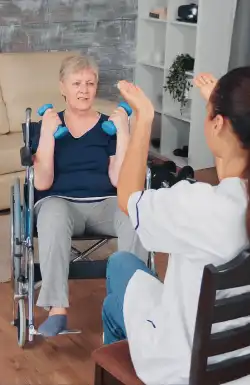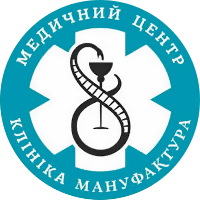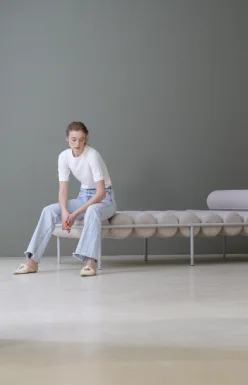
Rehabilitation after a stroke: what to expect and what to do
A stroke is an acute cerebrovascular accident causing serious damage to a person's health, and although its consequences are not the same for all patients, they significantly change the life after for all, because they affect a person's functional, cognitive capabilities and the mental state. Here we summarize in general the common consequences of a stroke in order to further outline the steps that need to be taken to reduce them and regain the functions lost due to acute stroke.
Consequences of a stroke:
- paralysis or muscle weakness, usually of one body side, sometimes complete paralysis.
- imbalance, without movement or in movement.
- speech disorder
- violation of the perception of space and objects in space, including one's body.
- impairment of cognitive abilities: loss or deficiency of speech or motor memory (memory of actions), loss of memories or connections between them, difficulty in thinking and expressing thoughts.
- behavior disorders: inhibition and caution or, in contrary, impulsivity and haste.
- emotion disorders: the most common are anxiety and depression.
- violation of body's physiological functions: loss or violation of vision (dual contours, narrowing of the vision), loss or violation of hearing, violation of swallowing function, urinary and/or fecal incontinence.
Recovery after a stroke
Talking about feasibility to recover from stroke in full or partly, the following determining factors should be taken into count:
- brain damage area and extent. The more part of the brain affected by a stroke, the more extensive and strong its consequences are. The functional and mental consequences of the lesion also depend on the stroke area localization.
- quickness of diagnosis and acute stroke treatment initiation. The extent of brain damage and the loss of imminence of its cells depend on this. Every minute counts in case of acute stroke, so everyone should know the stroke signs in order to notice it in time and take a person to the hospital.
- patient's age and concomitant diseases. Of course, younger age and the absence of complex chronic diseases helps the patient to more easily struggle for health restoration, but it is better to be aware that "young and healthy" people should not have strokes.
- patient's physical and psychological state. Recovery is a complex, monotonous and slow process, it requires a lot of person's efforts, both physical and emotional, and this process cannot be effective without patient input. Unfortunately, a stroke causes damage to both physical and mental health, so resources to overcome its consequences must also come from the patient's close people.
- quickness of rehabilitation measures start. Basically, stroke recovery begins in the hospital, within 24 or 48 hours after an acute stroke. The sooner it starts, the more chances for a good result.
Special after stroke rehabilitation is indicated for all patients, regardless of the stroke extent, it helps to reduce the level of personal disability and improve his or her further social functioning.
What is stroke rehabilitation?
We are talking about a program of various treatment measures aimed to encourage the brain to be active in those functions where it has suffered damage. Treatment measures may differ at different stages of recovery. Even with complete paralysis, loss of sight and ability to speak, the hospital staff provides with the first rehabilitation: turn the patient over, do limb exercises and massage, talk to the patient, asking questions to encourage the patient to speak and perform simple actions. An individual recovery program is drawn up after MRI diagnosis and thorough examination by a therapist, neurologist, speech therapist, physical therapist and psychiatrist.
In general, a rehabilitation program is centred around specific, repetitive actions, and consists of repeating them over and over again. It is the process of relearning lost skills. In the initial stages of treatment, especially when the patient does not succeed in the desired actions, such repeating practices are exhausting, frustrating and annoying, but rehabilitation doctors know that it is effective and will give the desired result. Therefore, special patience and perseverance are required from the patient, and the patient's relatives and close ones need to give him or her the maximum support and have patience as well.
Rehabilitation of a stroke patient is based on physical exercises and speech therapy, but should also include the psychiatrist and a psychologist observation.
Physical activities include movement exercises designed to improve whole-body coordination and muscle strength, balance, walking or fine motor skills, and even swallowing. Mobility skills are also added here - patients are taught to use assistive devices for movement, such as a walker, cane, wheelchair or ankle brace. An ankle brace stabilizes and strengthens the ankle to help support body weight while the patient relearns to walk.
For patients after a stroke is used a Constraint Induced Movement Therapy (CIMT). It is a group of exercises when an unaffected limb is restrained while a patient practices moving the affected limb to help improve its function. This therapy is sometimes called forced-use therapy.
Physical activity also includes a range of motion therapy - this is a set of certain exercises and some types of massage that help reduce muscle tension (spasticity) in order to regain the necessary range of motion.
Functional electrical stimulation is used to restore weakened muscles of the affected body part. A slight electricity is applied to weakened muscles, causing them to contract. The electrical stimulation may help reeducate muscles and prepare the body for active physical exercises.
Speech therapy will concern not only the restoration of oral speech and its fluency or production of correct letter sounds. These are also special exercises to understand words, expressions, texts, both oral and written; work on memorizing words and texts. The skills relearning during speech therapy exercises affect not only speech directly, but also the thought process, reasoning, thought retention and completion. This is a very important process for socialization of the patient.
The neuropsychiatric complications after a stroke, partially indicated in the list of consequences above, should be highlighted separately. Regardless of their manifestations - emotional, behavioral or cognitive disorders, they affect not only the quality of life, but also the rehabilitation process itself. Therefore, the after stroke treatment must necessarily include thorough diagnosis and correction of the patient's psycho-emotional state.
Neuropsychiatric consequences of a stroke include:
- Dementia and its associated cognitive disorders. Manifestations depend on the stroke extent and the age of a patient.
- Post-stroke depression. It is one of the most common neuropsychiatric complications of stroke and, despite its prevalence and negative impact on overall survival, is often not diagnosed by doctors. Depressive status is often associated with individual experiences due to illness, hospital stays and side effects of medications, but studies, including instrumental ones, have proven that the disorder is directly related to damage to brain cells and often has a long-lasting manifestation, sometimes up to 3 years after a stroke. Because depression directly affects the patient's motivation for rehabilitation, it needs treatment and correction. The basis for suspecting post-stroke depression is depressed mood or apathy of the patient for at least 2 weeks, accompanied by at least four of the following signs: decrease or increase in appetite and weight, insomnia or hypersomnia (excessive sleepiness), psychomotor agitation or slowing down, loss of vital activity, feeling uselessness and guilt, impaired focusing of attention, repeated suicidal ideas.
- Post-stroke anxiety disorder is the second most common disorder after depression. It can be combined with it or appear without depression, depending on the localization of brain damage. Conclusions made on observation of anxious patients after a stroke define their condition as "anxiety disorder with generalization". The basis for diagnosing generalized anxiety disorder is the presence in the patient of constant anxiety associated with at least three of the following symptoms: restlessness, anticipation of the inevitable negative scenarios, decreased vital activity, impaired focusing, irritability, muscle tension, sleep disorders lasting at least 6 months.
- Post-stroke catastrophic reactions. Emotional and behavioral disorders manifested by outbursts of anger and aggressive behavior, anxiety, crying, patients often show negativism and condemnation, which reflect the inability of the body to cope with physical and cognitive deficits. They are accompanying the post-stroke depression. Practice has shown the advantage of preventing catastrophic reactions over their correction. This disorder often develops against the background of a speech disorder (aphasia) with a decrease in its fluency, therefore, in order to avoid the persistent development of catastrophic reactions, speech therapy practices in post-stroke depressed patients should be applied sparingly.
- Post-stroke pathological affect. The disorder is characterized by frequent episodes of crying and/or laughter that do not correspond to the situation, are easily provoked and do not reflect the true causes of the emotion. Tricyclic and serotonergic antidepressants, which must be prescribed by a psychiatrist, remain for its treatment.
- Post-stroke psychosis, mainly in the form of hallucinations and delusions, is a rare complication of a stroke. Seizures are also often observed in such patients. Treatment of the disorder is exclusively medicine-based, after the diagnosis, the doctor prescribes appropriate neuroleptics and anticonvulsants.
Neuropsychiatric symptoms hinder to regain physical functions during the rehabilitation of a patient after a stroke, so their timely diagnosis and treatment is the potential for improving the prognosis and quality of life in such patients.
In addition to medication treatment of neuropsychiatric disorders, cognitive, behavior and emotional rehabilitation will be needed, which can take place in individual classes and in groups, where participants have the opportunity to restore social skills, learn to solve household and safety tasks.
How long does recovery after a stroke last?
Most patients require long-term rehabilitation - from several months to years. It should also be said that there is no final point in this matter. Each success of the patient is an achievement and a new start point to grow at the same time. And although it is often impossible to restore some functions 100%, the success of their relearning has an overall positive effect on regain of other functions as well as the patient's general condition and quality of life.
Remember that time is of the essence in stroke rehabilitation, just as it is in acute stroke treatment. You shouldn't and can't put life on hold after the acute phase has passed, "self-sparing" and "resting" in some cases means losing more. The earlier is the inclusion of the patient in movement, communication, and self-care, the better will be the result of restorative therapy.
How can rehabilitation of a stroke patient be organized?
A thorough diagnosis of the patient will give the most appropriate instructions on how and where to organize rehabilitation. It is worth contacting inpatient rehabilitation departments of specialized stroke centers and clinics. Intensive rehabilitation programs are provided here in courses of 2-3 weeks.
Outpatient units at hospitals provide separate medical and physical therapy services, which should be discussed and selected with your therapist and neurologist. You are provided such prescribed services outpatiently several times a week. Although the outpatient services are autonomous for visiting, the prescribed rehabilitation program must be completed according to the schedule and until its completion.
Home rehabilitation is based on self-practicing of exercises and the work of nurses or doctors at your home. Such a decision will be appropriate if the restoring course does not involve the use of specialized equipment. However, home rehabilitation is also the daily work of the patient and his relatives with him, regardless whether the specialized courses are taken in treatment centers or not. Simple household tasks, constant communication and adaptation to new conditions are needed by the patient and are part of his recovery after a stroke.
Make an appointment
Your name
Phone number
Direction
Desired date
Comment













